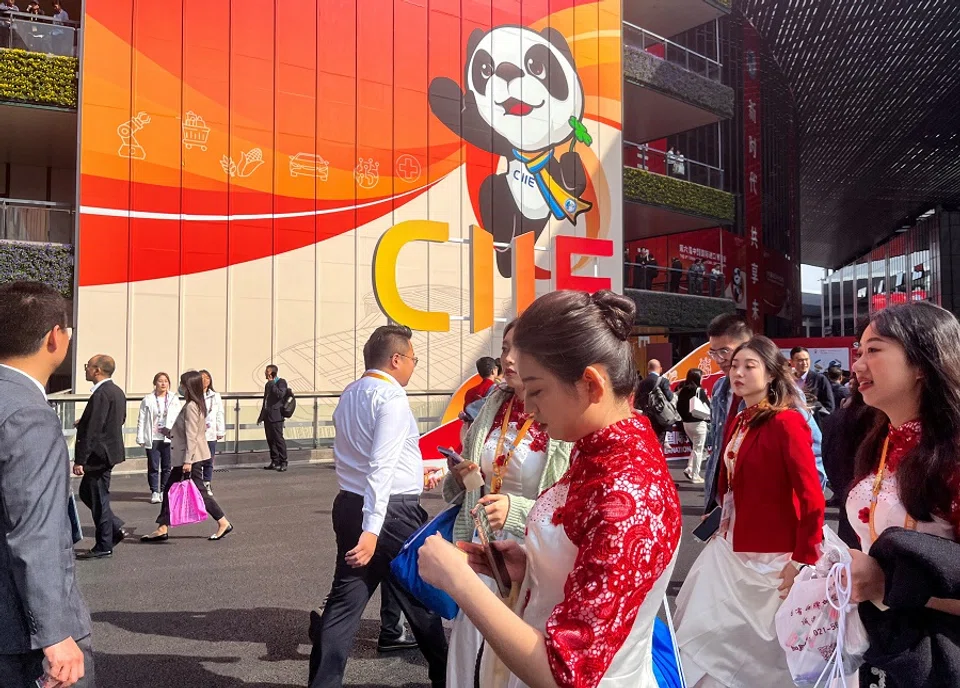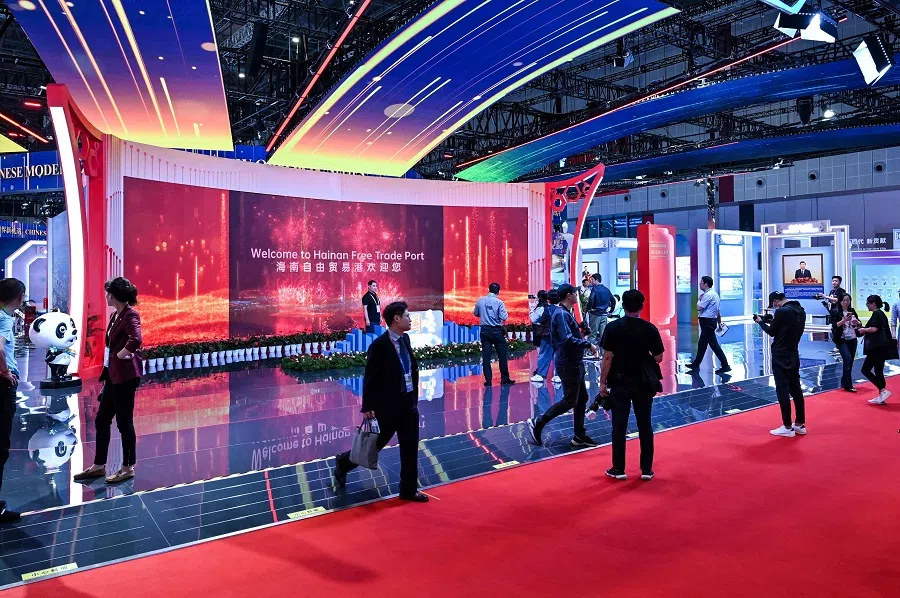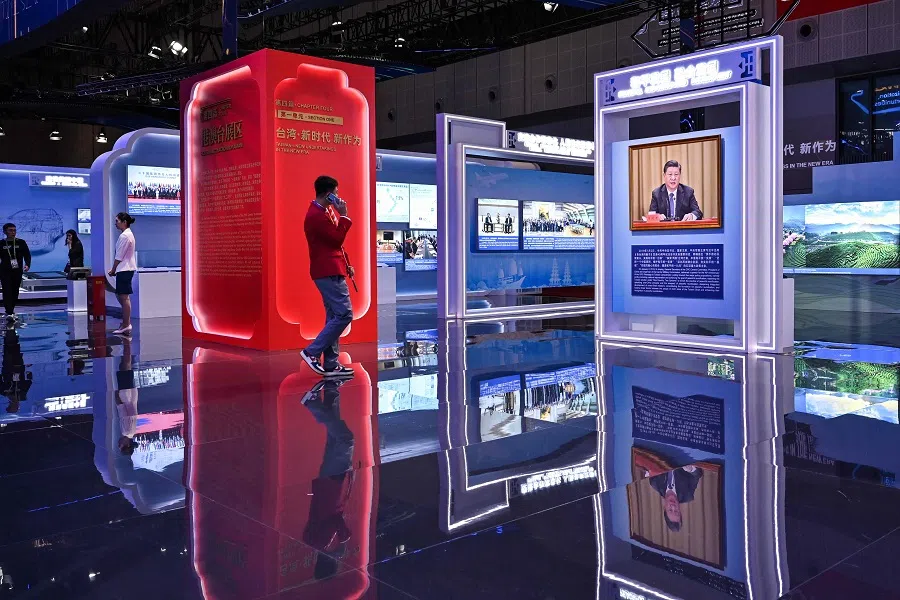China International Import Expo: A good start amid challenges and criticism
The annual China International Import Expo (CIIE) is back this year as a fully in-person event after three years of the pandemic. However, while the authorities say that the results are looking good, participants may not be saying the same thing. Despite positive attendance numbers, is the CIIE truly effective at expanding global business activities and promoting market openness in China?

On the first day of the China International Import Expo (CIIE), I asked a Singaporean merchant who was in China for the first time what the biggest challenge was attending this year's expo. He paused to think before answering: "It was all pretty smooth... the only thing was the traffic restrictions today; I had to walk a long way before getting in."
When posed with the same question, a business representative who attended last year's event gave a harrowing answer: the staff of the quarantine hotel in Shanghai where they were staying contracted Covid-19, and all their company representatives were forced to undergo a second round of quarantine, and almost could not make it to last year's expo.
Not just exhibitors coming in from abroad, even I myself, based in Shanghai, almost did not make it to the event last year because of strict pandemic restrictions.
Back then, the pandemic was raging in all parts of China, and those who had been to high-risk areas during the past ten days were barred from attending the expo. To enter, everyone had to carry proof of a negative nucleic acid test result done in the last 24 hours and had to wear an N95 mask throughout.
One year on, such measures are no longer a thing, and international flights have gradually resumed. After three muted years, I finally felt the atmosphere of a large-scale international exhibition: the exhibition hall was bustling, and the activities zone was filled with people, with the booths no longer run only by hastily hired Chinese staff, but by business people of various ethnicities from all over the world, speaking different languages.
Even the US and Australia, which have had tense relations with China, have been extraordinarily supportive of this year's expo.
Support from US and Australia
This year, more than 3,400 businesses set up booths at the expo with 394,000 professionals registered as participants; the Chinese authorities claimed that the number of exhibitors and professional participants who registered have rebounded back to pre-pandemic levels.

Even the US and Australia, which have had tense relations with China, have been extraordinarily supportive of this year's expo. The US sent the largest and most high-level trade mission to attend the expo, spanning industries such as agriculture, semiconductors and medical equipment. Australia had more than 250 businesses setting up booths, while Prime Minister Anthony Albanese even attended the opening ceremony, becoming the second Western leader of a major country to speak at the CIIE following France's President Emmanuel Macron in 2019.
After three years, the expo has gone back to a fully in-person event; but has it truly returned to its pre-pandemic glory days, as the authorities say?
At the opening ceremony for this year's event, Chinese Premier Li Qiang said the previous five iterations garnered a total intended turnover of nearly US$350 billion. According to official statistics, other than in 2021, total intended turnover has continually risen in the other three years. However, this sentiment is at odds with the perception of some of the exhibitors.
This year, it is particularly forceful in its criticism, denouncing the expo for straying from its original intent of promoting business activities, and for being "more of a political showcase rather than a business event".
A political showcase with little results?
A survey done by the European Union Chamber of Commerce in China last month showed that of the businesses that participated in the event last year, only 24% closed deals, a sharp decline from the 50% in 2018. Exhibitors interviewed said that while government trade missions are among the expo's biggest highlights, their symbolic significance is far greater than the actual results they bring.
In the past few years during the CIIE, the chamber has repeatedly urged China to make good on its promise to open up. This year, it is particularly forceful in its criticism, denouncing the expo for straying from its original intent of promoting business activities, and for being "more of a political showcase rather than a business event".

First held in 2018 when the China-US trade war broke out, the CIIE aims to showcase China's determination to promote market openness and counter US unilateralism. In his opening speech this year, Chinese Premier Li Qiang again vowed to further expand opening up and cooperation by expanding imports, easing market access, and protecting foreign investors' rights and interests. However, the dramatic changes inside and outside China since the pandemic have made it more difficult to fulfil these commitments.
The past three years of anti-Covid measures and regulatory crackdowns have dealt a big blow to China's private sector, and China's economic growth in 2022 faces the quandary of missing the mark for the first time in many years. Despite market predictions that China will achieve its 2023 growth target of around 5%, the world's second largest economy still faces many uncertainties, even in the last two months of the year.
Amid the property slump, low confidence and soaring local government debts, can the Chinese market still display its ability to "buy the world"?
A good start amid challenges
Customs data released this week showed that exports fell for a sixth straight month and recorded a bigger slump than expected in October. Although imports finally rose in October, ending seven consecutive months of decline, China's consumer price index fell again, indicating weakness in domestic demand. Amid the property slump, low confidence and soaring local government debts, can the Chinese market still display its ability to "buy the world"?
Also, with rising geopolitical tensions, especially the intensifying China-US rivalry, China's decision makers are placing greater emphasis on national security. At the same time, foreign firms in China are on tenterhooks amid tightening data controls, revisions made to the anti-espionage legislation and the raids on several foreign companies.

On the eve of the CIIE's opening, it was revealed that US fund giant Vanguard Group and consulting firm Gallup will be withdrawing from China due to the country's weak economic outlook and increased regulatory scrutiny of foreign firms. Cloud Software Group, the parent company of cloud computing enterprise Citrix, also announced this week that it would stop all new commercial transactions in China, becoming the latest American tech enterprise to withdraw from the Chinese market.
As China's growth drivers gradually shift from exports and investments to consumption, expanding domestic demand via the CIIE should be a win-win situation for foreign companies and the Chinese market. However, the economic and policy uncertainties of this massive market, like its size, cannot be ignored. Doubts and criticisms of the CIIE reflect the challenges facing the future development of the Chinese market.
It is difficult for either the CIIE or the Chinese market to return to the way they were before the pandemic. But after three years, the fact that more foreign merchants are able to freely enter this national-level expo is at least a good start. The next step is to see how China can strike a balance between economic and political considerations in the new post-pandemic situation to ensure that the door to market openness can really be opened "wider and wider".
This article was first published in Lianhe Zaobao as "进博会重回疫情前盛况?".

![[Big read] Paying for pleasure: Chinese women indulge in handsome male hosts](https://cassette.sphdigital.com.sg/image/thinkchina/c2cf352c4d2ed7e9531e3525a2bd965a52dc4e85ccc026bc16515baab02389ab)



![[Big read] How UOB’s Wee Ee Cheong masters the long game](https://cassette.sphdigital.com.sg/image/thinkchina/1da0b19a41e4358790304b9f3e83f9596de84096a490ca05b36f58134ae9e8f1)